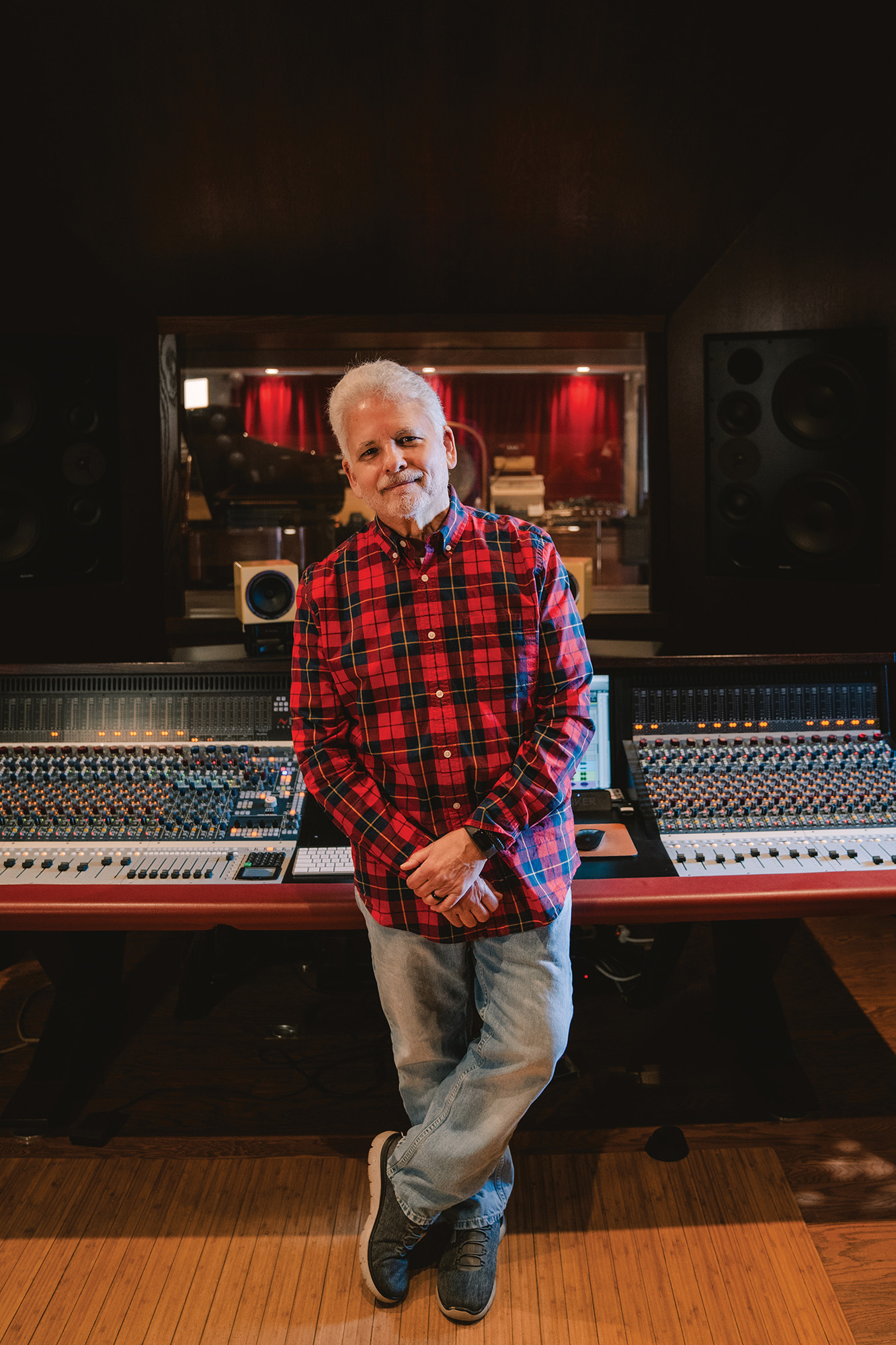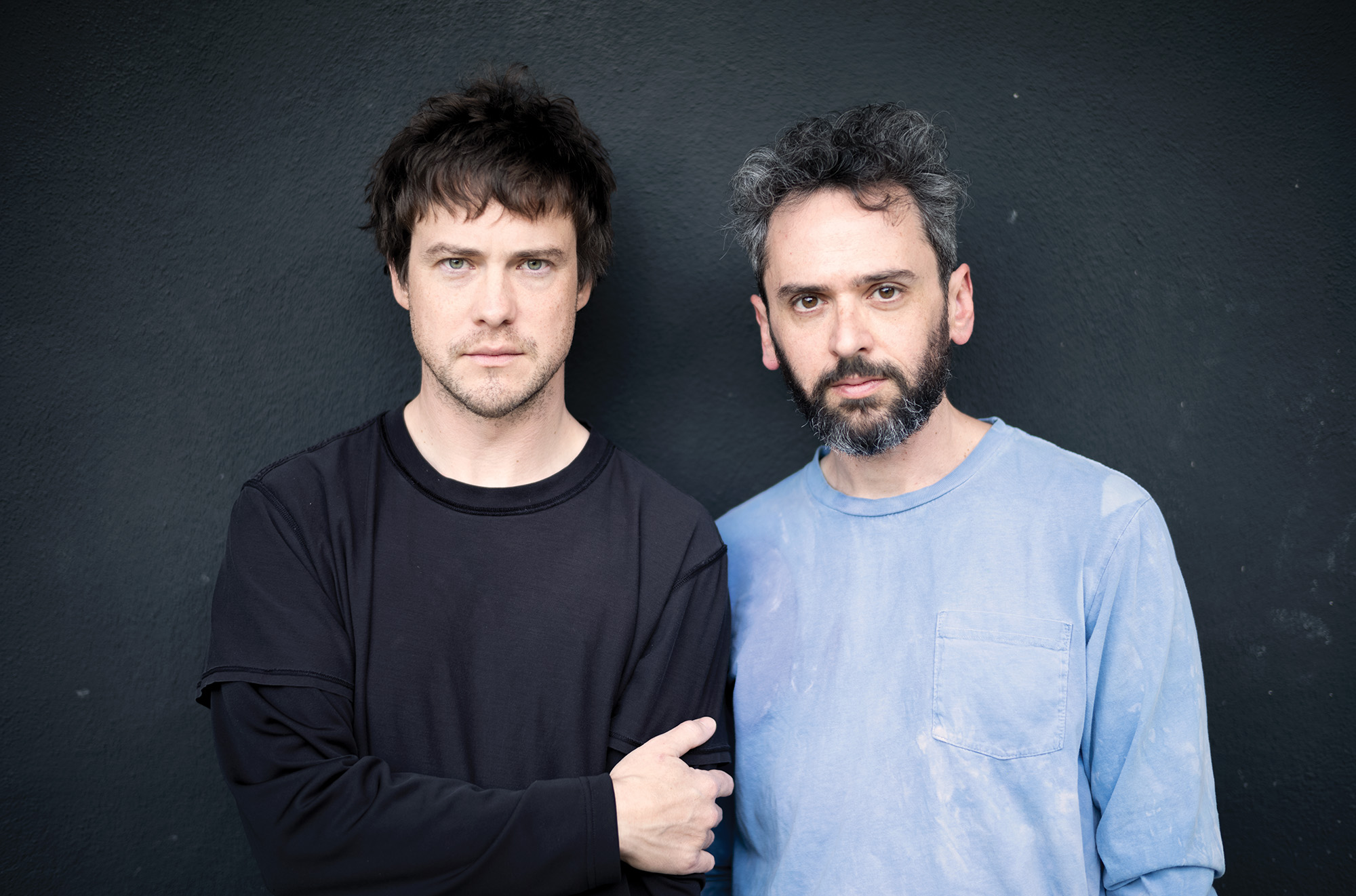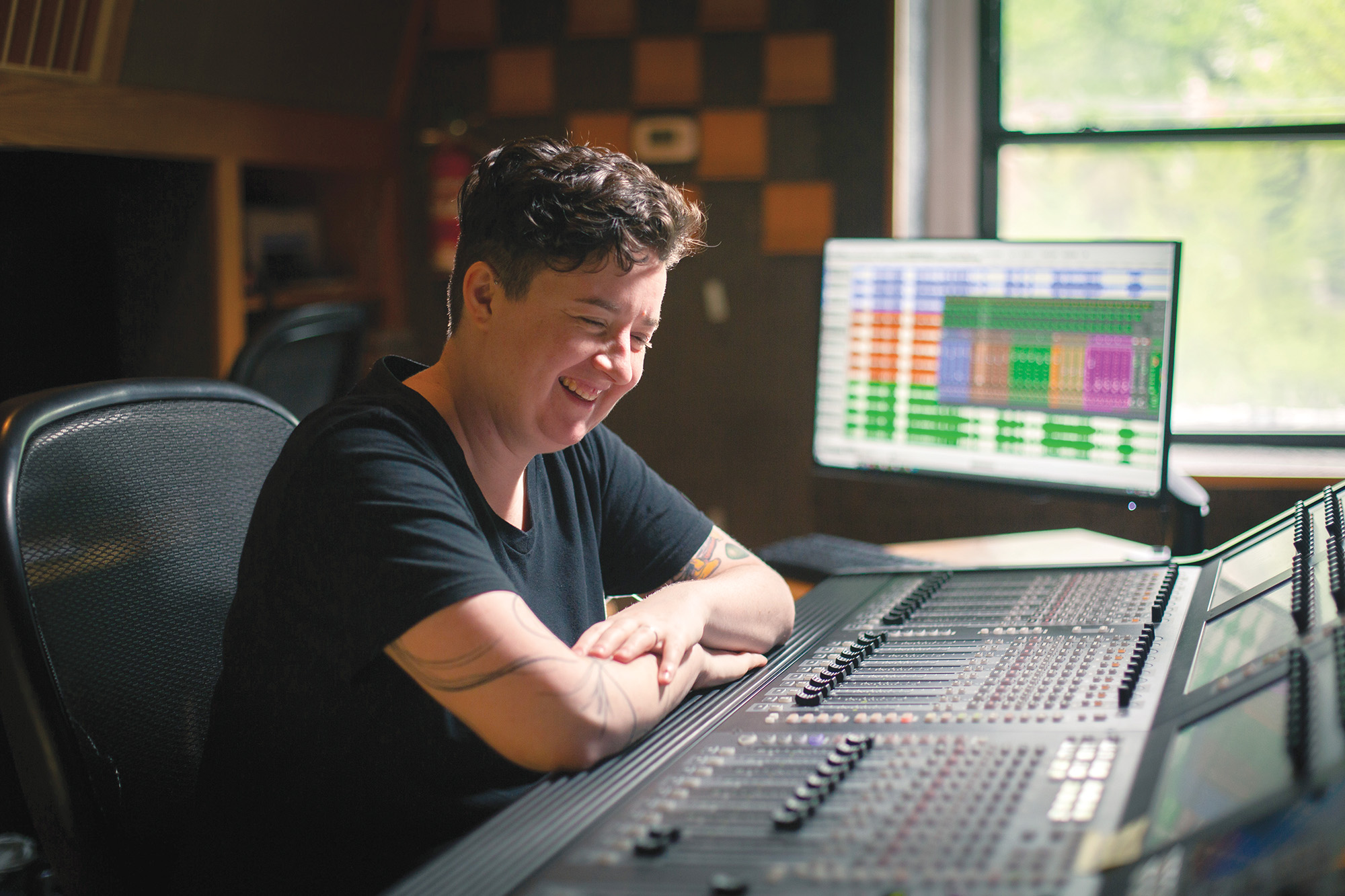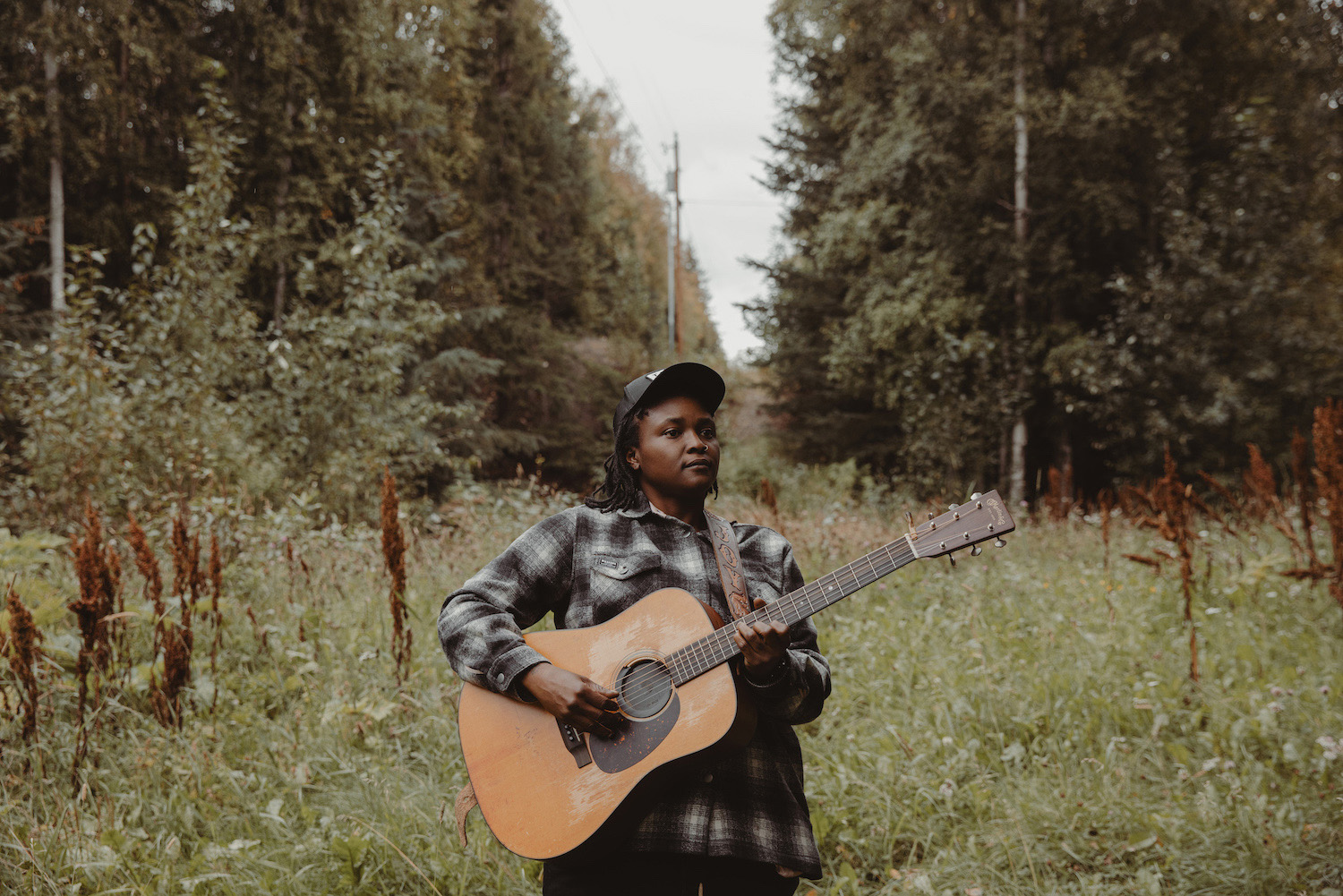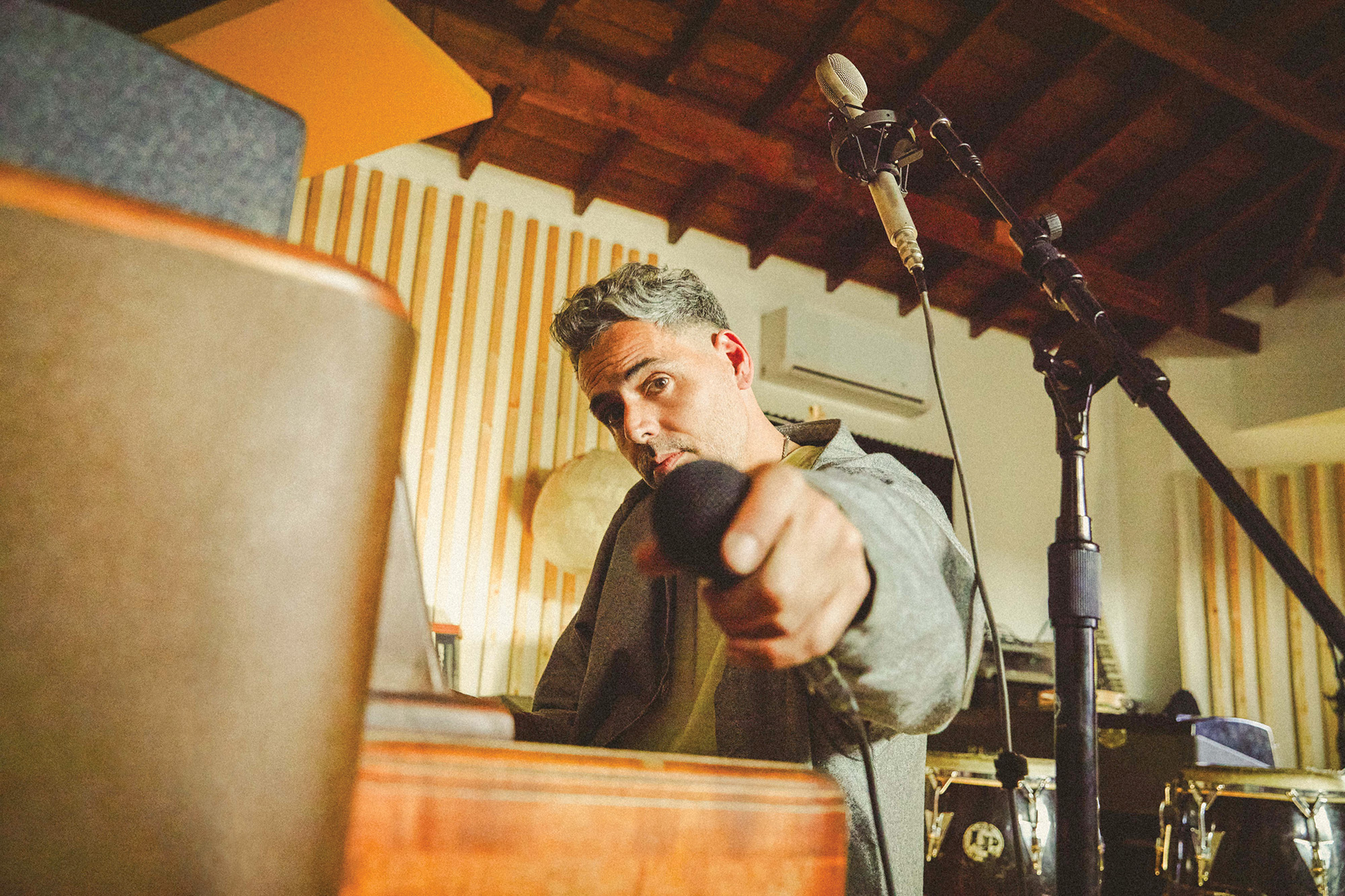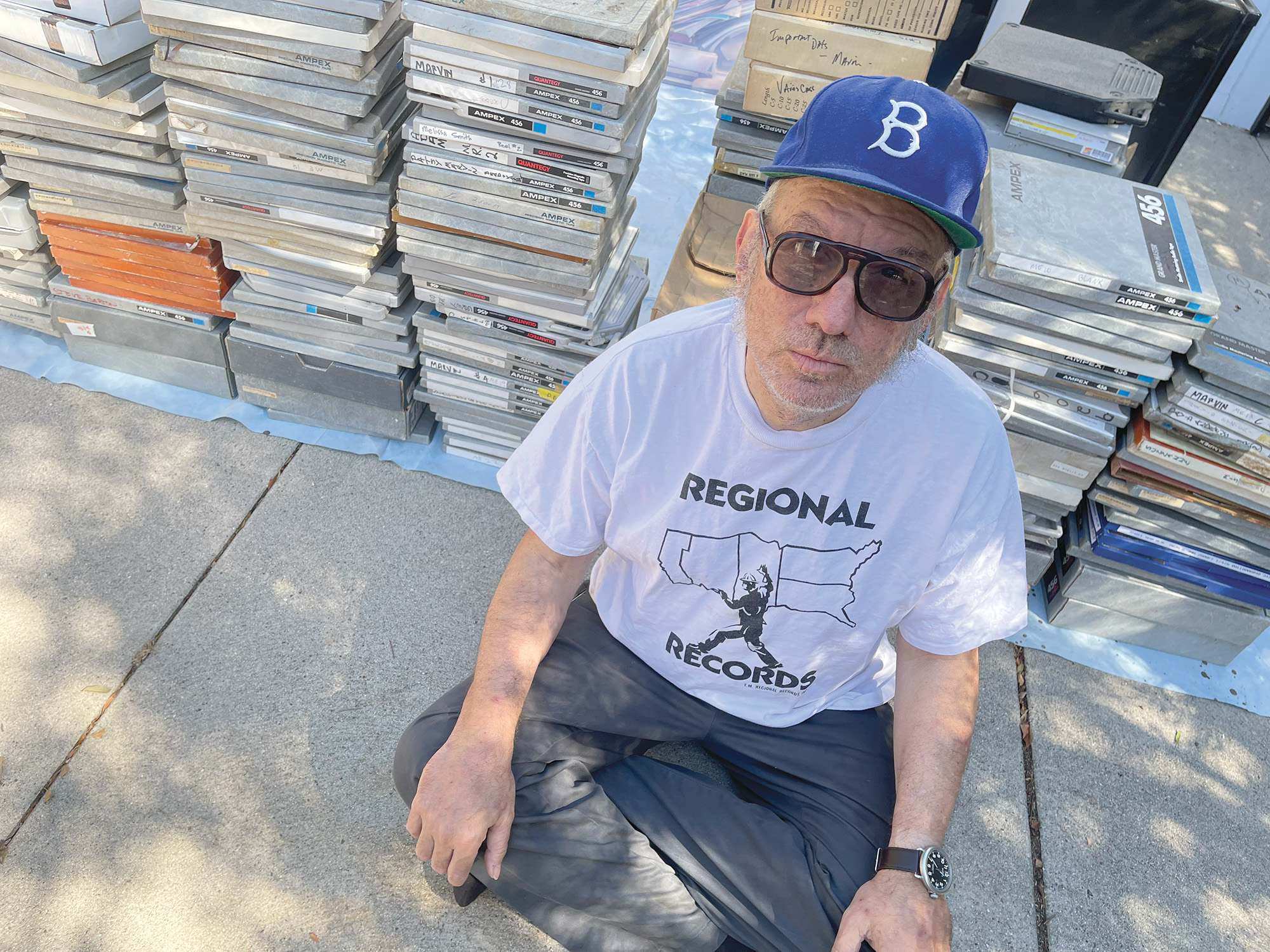When did you start Pendulum?
I started Pendulum audio in 1988. I went to Columbia University, got my degree in Physics in 1975, and from there I went to work at Bell Laboratories as a research scientist, and during that time also got my masters degree in Solid State Physics from Princeton. During the same period I had been playing guitar in bands and recording and all that kind of stuff, and the same thing that drove my desire to play music was the same kind of thing I saw in doing experimental physics, which was sitting down at a bench designing experiments, building equipment and basically trying to understand how things work. I'd been in bands and had a record deal with a band, and things didn't go well. I decided to do the science thing for thirteen years, and during that time I had been working on lots of audio designs. In 1988 I decided to start Pendulum Audio. Our first product was an acoustic instrument preamp — the first rack mounted acoustic guitar preamp called the HZ-10. It had a four band parametric EQ, and a stereo effect loop. It also had a little phantom-powered box that plugged in the endpin jack of the instrument called a preamp module. That was a little powered head amp so to speak, and it put the preamping of the high impedance pickups — most of these are piezo style pickups that require a 10 megohm input impedance — it put that preamping directly at the instrument without having any batteries involved. It was, if I do say so myself, rather revolutionary, particularly for the acoustic guitar market. We went from that unit in 1988 to the current unit that we're still selling now that came out in 1993: the SPS-1, which is a single rack space, two channel version of the HZ-10, which has three bands of parametric EQ on each channel as well as pan controls for blending the channels in stereo.
How did you move into pro audio?
I went to AES in San Francisco in '98 and I introduced three products all at once, which were the MDP-1 stereo mic pre, the OCL-2 stereo opto compressor and the 6386 mu compressor. Those are designs that have arisen out of equipment that I had built and used in my own personal studio. The MDP-1 is a Class-A, all tube design with a transformerless output stage, with a great deal of headroom. It can do +35d Buinto10 kohms. What I was shooting for with that design was to try and make a very big, open-sounding mic pre, which has a certain amount of tube coloration if you're looking for coloration, but not coloration associated with the artifacts you normally find in vintage equipment. Just that certain openness and detail and honesty in the midrange, which to my mind is what tubes are best at doing.
As far as your compressors go, you mentioned in an early conversation that you were going for the Fairchild "Holy Grail" sound. Would you say that is still the case?
I've been building compressors for a long time — many of the opto and mu varieties — and I was always a big fan of the sound of The Beatles' records and other records that I learned later had been processed through the Fairchild. There was something magical to my ears in the way that it compressed, the character of the compression and the sound that it gave those records — to me the sound of rock n' roll is compression, tape saturation and sometimes equipment saturation. So I've long been building compressors with that idea in mind, and when I designed the 6386 I had learned which tube they had used in the Fairchild and began building a mu compressor around that, and learned that the magic was in that compression profile that was unique to that tube. What I did was basically give the compressor my own wrinkle on the Fairchild sound in that rather than using a vintage circuit topology with an output transformer, I decided to make it transformerless Class-A just to make it a bit more hi-fi sounding but still have that same character of compression. The ES-8 is a very similar unit but uses a different tube, which is easier to find these days.
So is the 6386 a more aggressive sounding compressor? Or are you trying to make the ES-8 sound identical to the 6386?
It's pretty much impossible to get them to sound identical. In terms of the way that they compress, the character of the compression, I think the profiles are pretty much identical. However, the 6386 and the 6ES8 are different tubes in terms of the way they are built. The 6386 is a military tube and really wasn't initially meant to pass audio, so it tends to be a bit more aggressive in the midrange, a bit grainer, a bit grungier just because it's not a tube that you would normally associate with high end audio. The ES-8 tube is a European tube. Some of the ones I've been using are made either by Mullard or Telefunken, and they tend to be physically larger and also tend to be a bit more hi-fi sounding. So in terms of the way that they compress they're identical, but in terms of the way they pass audio, the ES-8, to my ears anyway, isa bit more hi-fi sounding.
I had an ES-8 at the studio for a while and I thought it sounded great.
The interesting thing about it is with the mu-style compressors, it's easier to get faster attack times but quite often you get a lot of pumping and other artifacts when you do that. I spent a lot of time in that design to try and make it do its thing very fast but minimize the artifacts and thus give you a cleaner compression but still have that fast grab like you hear with a Fairchild.
I've heard your circuit design is quite envied by other pro audio designers.
That's nice to hear, I didn't know that. I've been designing for a long time and most of my circuit design has come from working at the bench and trying different things. I don't think I've ever taken a formal electrical engineering course in my entire education. It's all been learning by trial and error and reading. I pretty much kept the electronics thing to myself so to speak. I didn't want my concept of audio to be polluted by taking some very dry and boring electrical engineering courses. It's always been something I've sort of kept for myself and my electronics knowledge had served me quite well when I was a research scientist, because most of what you do in experimental physics is design and build things that nobody's built before to make measurements that perhaps nobody's made before or to grow crystals that nobody's made before. A lot of the same challenges that you would find in that sort of career are the same sorts of challenges that you find in designing audio equipment. With audio equipment, at least with me anyway, I have much more of an emotional contact with it just because music has been such a large part of my life and has shaped many things I've done.
In terms of construction, how have you arrived at where you are now? As opposed to sort of a point-to-point aesthetic, was it "build more units", or was it a layout issue?
Well, point-to-point is a great way to go if you want to build very few units and make them extremely expensive. What I've tried to do is make what I think to be the reasonable compromise. In the MDP-1 for example, it's not point-to-point wiring but all the circuit boards are only single-sided, so many of the bad qualities that people associate with things on a circuit board is interaction between having traces with audio on them on both the top and the bottom of the board making virtual capacitors. Whereas if you just use single-sided circuit boards you avoid that and it more closely simulates point to point.
The OCL-2 is obviously your electro- optical compressor?
That's a product I designed around an optical cell that I designed to try to get around some of the problems normally associated with opto compressors. If you take something like a LA-2A, which is a great sounding unit, you'll notice that it has a certain character of attack and release that is limited by the physics and the material properties of the opto cell you're using. Quite often that's a multi-stage release time and a slower attack than you'd like if you really wanted to do very fast attack, limiting sort of stuff. So I designed an opto cell to try and get around that time lag that most opto cells possess, and that's what's in our OCL-2 and also in the Quartet. It tends to give you a very fast attack and release times if that's what you want in its fast mode and operates much faster than most opto compressors that people are used to.
So the Quartet is a recent creation?
Yes, it is a combination of the MDP-1 mic preamp and the OCL-2 compressor. It's a single-channel unit and also has a new tube EQ that is a high and low shelving as well as a six-frequency mid-band, and an opto-based de-esser that is a completely new design as well. The de-esser was an interesting project in that many de-essers I've tried are based on controlling the amplitude of the de-essing, sort of what you do with EQ-ing a side chain on a compressor. When the 'S' comes along it just pulls it down in amplitude. What I did here was make a de-esser that acts as a notch filter at the 'S' frequency. So when it triggers it actually activates a notch filter that pulls down the frequency range around the 'S.' I tried to make it a much more transparent, much more unobtrusive de-esser.
I suspect you're still strictly a tape kind of person with your own recording.
Well, I have done analog tape for a long time. I currently have three DA-78s I've been using, and I record strictly with outboard converters, most of which I've designed and built myself. Most of the converters you see out there in the marketplace are digital converter chips that companies like Crystal Semiconductor and AKM and places like that manufacture. It's a question of implementing them both with clocking signals as well as with analog support circuitry. So when I say that I build converters I obviously didn't design the chip, but I used the chip with my own analog front end.
I'm jealous! You can do that and I can't.
Well, it's nice to be able to do it, but it's also a curse because long ago I started life as a musician and guitar player and that ends up being much less of what I do just because life becomes more complicated with deciding to build everything for yourself. But in terms of things I've built, I've built tape machines in the past, but I'm getting too old to spend my life aligning analog tape machines so I've kind of given up on that. Whenever I need to do anything analog I'll either go some place that has an analog machine or I'll take it to my friend Jack Senecal, who has a beautiful 1/2" two track MCI machine he converted to vacuum tube electronics, which I can bounce mixes to and they just end up sounding superb.
Are you using Jensen input transformers pretty much across the line, or others as well?
It's an interesting question, and I find that the input transformer on a mic preamp makes a big difference. With the transformers I use in my MDP-1, I give people a choice as to what they want to be put in it. The MDP- 1A uses a Jensen 13K7, which for tube circuits I think is one of the best input transformers out there. We also do a version of that mic preamp, the MDP-1B, that uses a custom transformer that has a bit more meat in the midrange. I would compare it more with an old Triad transformer. It tends to give you a larger presence in the midrange, sort of like you may find with an old Universal Audio module. But to me the Jensen overall is the more versatile choice — especially for acoustic instrument recording. The Jensen seems to give me more of what I'm looking for. The mu compressors use the Jensen 10 K 1:1 input transformers, the JT -11Ps, which are very neutral sounding. They sound great, although I have done some custom versions that use the old Triad A26s that the Fairchild's had used. I certainly wish I could buy a thousand of those.
If I wanted to have this one customized could I have that done?
Oh, absolutely. I mean, if you can find the A26s and send them on, it certainly could be changed. What I find those old Triads tend to give you is less bottom end, but they tend to give you more of that rock 'n' roll midrange.
It was good to talk to the guy who designed one of my favorite pieces of outboard gear.
That's great. That's my favorite thing about running a small company — I'm the guy who picks up the phone, and I enjoy it. What I do is more than just electronics, it's music, and I think that's one of the most positive things about running my own company and the type of person I am. I sort of straddle both sides of the fence. I'm a musician as well as a designer, which allows me to be able to speak to people who actually make music as well as people who use the gear and that has always been the most fun.
